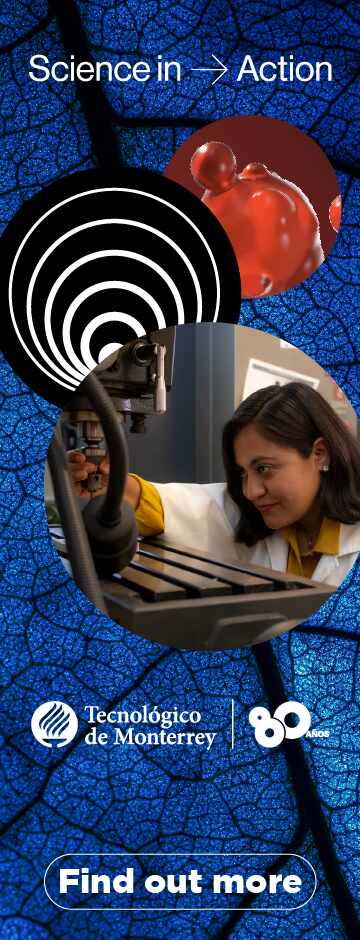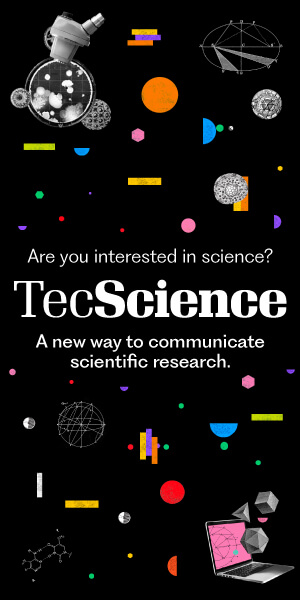https://tecscience.tec.mx/en/biotechnology/seawead-uses/
Researchers seek to take advantage of these organisms, from food for animal consumption, drugs, and even to generate fuel.
Asael Villanueva
Larger than normal giant floating isles of seaweed are drifting through the oceans, posing a risk to the Caribbean region. Sargassum seaweed, which generally offers shade and shelter for fish and sea turtles, could become a severe concern for beaches, ecosystems, and possibly human health as the water’s temperatures rise.
However, it is not all bad. Seaweed and microalgae provide an opportunity for those scientific researchers who study them and are particularly interested in finding methods to use them for positive purposes. Algae are used in a variety of applications, including animal feed, nutrition development, medicines, and human-use items, as well as fuel generation.
This technique not only helps in the creation of products but also provides an opportunity to mitigate the threat to the environment resulting from algae expansion caused by temperature changes in the seas.
Researchers such as Roberto Parra Saldivar and Elda Melchor, both members of Tec de Monterrey’s Institute of Advanced Materials for Sustainable Manufacturing, are currently researching the potential of algae for human benefit.
Seaweed uses
Algae as food for shrimp and aquaculture
Elda Melchor is a Tec de Monterrey research professor who specializes in the study of sargassum and its possible uses. She leads a team working to harness marine algae using a sargassum biorefinery technique.
This procedure, which is similar to refining other goods like petroleum, attempts to transform microalgae into a range of valuable products by separating them into usable components such as proteins and lipids.
Elda’s scientific interests include the creation of adapted shrimp feed produced from sargassum.
The researcher and her colleagues have successfully manufactured shrimp formulations in partnership with the Biological Research Center of the Northwest in La Paz, Baja California.
When these items were compared to conventional market choices, the shrimp preferred the sargassum-based food. They also had faster growth rates and an extremely low mortality rate of about 1%.
“There’s a lot of interest in the aquaculture industry. We’ve already received interest from companies in this technological development, and we will now seek funding from both the industry and stakeholders to further improve this formulation,” said Melchor, who also works at the Institute of Advanced Materials for Sustainable Manufacturing.
Algae to create food and treat wastewater
Roberto Parra began exploring microalgae during his postdoctoral studies at the University of Westminster in the United Kingdom over fifteen years ago. During this time, he worked on a proposal for British Petroleum that looked into the usage of microalgae for oil spill cleanup and biodiesel manufacturing.
However, technological and budgetary constraints changed the focus of these investigations to nutrients, notably the utilization of algae in the manufacture of polyunsaturated fatty acids.
These substances, which include Omega 3 and Omega 6, are also advantageous to the human body, notably in brain development and cardiovascular health, and can be found primarily in certain food sources.
According to Parra, this research focuses on extracting and synthesizing these molecules in order to include them in nutritional supplements and different pharmaceutical products.
“We began working extensively on designing various production systems for polyunsaturated acids such as Omega 3 and Omega 6, employing techniques such as supercritical fluid extraction.”
This method includes exposing carbon dioxide to certain pressure and temperature conditions, resulting in a liquid that can penetrate the pores of microalgae to extract the essential chemicals.
Furthermore, microalgae may be used to effectively remediate wastewater, producing biomass with applications in agriculture and medicine.
“It turns out that wastewater can be treated with microalgae, which is very efficient and cost-effective. Wastewater treatment facilities emit a lot of CO2 because they need to pump air into the tanks, and the energy required for this operation is sometimes similar to what a city would require,” Parra explains.
While wastewater treatment plants employ air to neutralize certain microbes, research has shown that algae can do so without the need for extra aeration, making it an integral part of a more efficient and cost-effective system. This procedure produces non-hazardous biomass that may be used in agriculture as a very effective plant growth nutrient.
Solar sunscreens
Roberto Parra also emphasizes algae’s potential as a source of important pigments like phycocyanin and phycoerythrin. In contrast to synthetic sunscreens that harm the environment, these pigments can be employed in the production of natural, biodegradable sunscreens that have no negative influence on marine ecology.
Furthermore, pigments found in microalgae, such as chlorophyll, may have photovoltaic qualities, allowing solar energy to be captured and converted into power.
Parra and his colleagues have investigated extracting and using these pigments from microalgae in the production of dye-sensitized solar cells and other light-to-electricity conversion devices, making the process more efficient and cost-effective.
These chemicals have also been researched for their anti-inflammatory capabilities in the treatment of numerous inflammatory illnesses and ailments, as well as possible cancer therapies, according to Roberto.
During this time, academics from the University of Swansea in Wales, the INECOL Institute in Veracruz, and enterprises such as Membranology have joined the Tec’s research efforts.
Challenges of algae
The route toward a more widespread and common use of algae and microalgae is still littered with challenges to be solved.
One of these obstacles, according to researchers, is microalgae cultivation, because large-scale manufacturing of specific derivatives necessitates the development of reactor systems capable of satisfying this demand.
As Elda also points out, it is critical for the sargassum to remain fresh, which demands a particular logistics infrastructure for its collection in open waters rather than stranded deposits at beaches.
Another difficulty is that not everyone or every group has access to algae, and they must also adhere to specified standards imposed by government agencies such as the Secretary of the Navy (SEMAR for its intials in Spanish).
However, both experts highlight the necessity of utlizing algae and converting them into useful resources, emphasizing the critical role of collaboration across multiple sectors, including academics, research, governments, and business.
“One thing we need to do is address these significant challenges through research and collaboration with academics from around the world. We need to keep improving this, and we should see more items on the market shortly,” Parra concludes.
Are you interested in science?
TecScience, a new way to communicate scientific research. Visit: https://tecscience.tec.mx/en/










